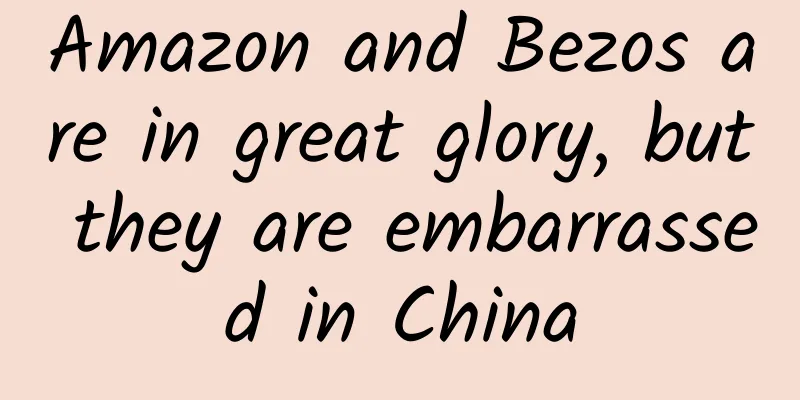Looking into the future from the sales volume in the first five months, which brands have reached the end of their usefulness and which ones can still be saved?

|
2024 is almost halfway through, market competition is becoming increasingly fierce, price wars are emerging one after another, and there are more and more verbal battles between the heads of major automakers, vividly illustrating what it means that competitors are enemies. However, the ability to talk big has never been a criterion for measuring the strength of an automobile manufacturer. In the automobile market, sales volume is the ultimate evaluation criterion. Without sales volume, everything else is empty. So which brands performed worst from January to May? There are many ways to calculate automobile manufacturers' sales, and data from different institutions sometimes conflict with each other. We now use the retail sales statistics standard of the China Passenger Car Association, which is relatively authoritative in the industry, to see which brands still need to continue to work hard from January to May. According to the China Passenger Car Association, from January to May 2024, the cumulative sales of passenger cars in China will be 8.073 million, a year-on-year increase of 5.7%. In other words, despite various difficulties, the general trend of the industry is growth. In other words, whoever falls will be embarrassed. Let’s first take a look at how those brands that were already in a slump are performing. Chevrolet was the "diving champion" from January to May, with cumulative sales of only 25,000 vehicles, a 61% year-on-year drop. With a relatively low sales base, it can still plummet by more than 60%. It seems that Chevrolet's chance of "saving" is not great. Think about it, in the past few years, which Chevrolet car has entered the mainstream market? It seems that none. Other smaller brands are also declining rapidly. From January to May, Cadillac fell 26%, Hyundai Motor fell 21%, Peugeot fell 20%, Volkswagen's Jetta fell 19%, Buick fell 18%, and Land Rover fell 14%. Luxury brands could not withstand the pressure, and Korean, French and American cars were further marginalized. The decline in sales of joint venture manufacturers is a fact that can be seen with the naked eye. So, are domestic brands doing well? Not really. From January to May, Haval's sales fell by 19%, and the once legendary Haval H6 couldn't even guarantee monthly sales of 10,000 units; Venucia plummeted by 32%, Roewe fell by 16%, GAC Trumpchi fell by 13%, MG fell by 12%, and even the leading manufacturer Changan fell by 10%. Such facts prove that domestic cars do not have a golden ticket to immunity. The overall share of domestic cars has exceeded 50%. While the leading manufacturers are squeezing the living space of joint venture cars, they are also gradually eliminating those domestic manufacturers with weak strength and product power. Competition does not distinguish between countries, and consumers are becoming more and more rational and will not unconditionally support domestic products. Small manufacturers have suffered a sharp decline, which is directly related to their small scale and weak risk resistance. During the market transformation period, these small and medium-sized manufacturers will definitely be the first to be eliminated, which is a general rule of the development of the automobile industry. So what about the large traditional manufacturers? From January to May, Toyota's sales volume was only 553,000 vehicles, a sharp drop of 14% year-on-year; Honda's sales volume in China was 346,000 vehicles, a year-on-year decrease of 16.7%; Nissan's sales volume was 289,000 vehicles, a year-on-year decrease of 23.5%. The three most powerful Japanese brands back then have become brothers in distress in just a few years, and the halo of Japanese cars is gradually disappearing. More importantly, this is the result they achieved after significantly reducing prices. During the 618 period a few days ago, FAW Toyota launched a Corolla priced at 79,800 yuan, but the prospects are still bleak. Even fire-sale sales cannot gain market share, which indirectly proves that Japanese cars are not so good now, and the strong position they have built in the Chinese market for decades is crumbling. The Chinese market is not the Japanese market, where competition is fierce, and Toyota and other manufacturers do not have the privilege of being "too big to fail". Nokia dominated the global mobile phone market for decades, but it took less than three years for it to go from being the world's number one to being sold to Microsoft. So, if one day the top three Japanese companies become the small three, or even give up the Chinese market, don't be surprised. The sales of these traditional domestic and joint venture manufacturers have declined, on the one hand because of their own insufficient product strength, and on the other hand because of the impact of the new energy market. Facing the new energy era, these manufacturers seem to have no effective means of coping except price cuts. This is called the situation is stronger than people. In the past three years, China's new energy market has been booming and has become a hot spot in the entire market. The monthly penetration rate in May was over 50%, which seems to be a strong momentum. So, the mainstream manufacturers must be doing well, right? No. Nezha Auto's cumulative sales from January to May were only 24,000 vehicles, a year-on-year plunge of 42%, making it a prominent package among the new forces in the automotive industry. With the continuous increase in the penetration rate of new energy, Nezha Auto can go against the trend of the entire industry. It seems that the problem is really serious. It is worth mentioning that Nezha is not the only new energy manufacturer that has seen a decline in performance from January to May. Ora plummeted 33%. It is currently mainly supported by the Ora Good Cat. Its brand image is solidified and it is difficult to recover in the short term; Aion fell 26%, and the consequences of long-term reliance on the taxi market began to appear; Chery New Energy fell 17%, and its main models only include a few low-end models such as the QQ Ant; Geely Geometry fell 10%. After the Galaxy series models were launched one after another, the support for Geometry is far less than before, and it is still difficult to recover. Different people have different benefits. Some manufacturers have seized the historic opportunity of new energy and have risen rapidly, but some manufacturers cannot take off even if they are at the forefront. Zeng Qinghong, the CEO of GAC, recently called for a rational internal circulation in the Chinese auto market, probably because of the dismal performance of the market. At present, the Chinese auto industry is in a critical period of transformation. Once a brand begins to enter a downward channel, it will be very difficult to make a comeback and re-enter the mainstream market. Every carrot has its own hole. Once the hole is gone, no matter how big the carrot is, it will have to stand against the wall. Judging from the current situation, it is unlikely that both domestic traditional manufacturers and joint venture traditional manufacturers will be able to turn things around; brands such as Leapmotor and Chery New Energy may be able to rise again after hard work. So, which of the domestic new energy manufacturers with a certain foundation, such as Ora and Nezha, do you think can be saved? As a winner of Toutiao's Qingyun Plan and Baijiahao's Bai+ Plan, the 2019 Baidu Digital Author of the Year, the Baijiahao's Most Popular Author in the Technology Field, the 2019 Sogou Technology and Culture Author, and the 2021 Baijiahao Quarterly Influential Creator, he has won many awards, including the 2013 Sohu Best Industry Media Person, the 2015 China New Media Entrepreneurship Competition Beijing Third Place, the 2015 Guangmang Experience Award, the 2015 China New Media Entrepreneurship Competition Finals Third Place, and the 2018 Baidu Dynamic Annual Powerful Celebrity. |
<<: Microsoft Spartan Browser Benchmark: A Qualitative Leap
>>: Rub and rub! Apple Watch screen scratch resistance test is terrible
Recommend
The click-through rate increased by 45% in 2 days, and the conversion rate exceeded 90%. Information flow optimization creativity needs to do these 4 things right!
“Every time I write a creative idea, I feel so pa...
Is your phone secure?
Many people may have been scared by the "sup...
6 reasons why Douyin live broadcast room was banned!
Douyin is currently strictly regulating the behav...
A complete guide to promoting ToB product features
Product promotion can be divided into new functio...
Analysis of competitive products of Jianying APP
“ Competitive product analysis is one of the esse...
Zhulu Video Account 1.1 Operator Practical Operation Course New Platform New Opportunities, Build a Private Domain Traffic Position!
Zhulu Video Account 1.1 Operator Practical Operat...
How much does it cost for Atel to join a fast food mini program?
How much does it cost to join a fast food app in ...
Tiye Duck Duck 2nd iPad Illustration Class
Course Catalog ├──Courseware+color card+brush | ├...
Has the former overlord of the earth really been served on our dining table?
if The ancestor of chicken is dinosaur We brought...
Good operations must have strong persuasiveness. Here are three tips for you.
Whether in our daily life or work, dealing with p...
If you turn on WiFi, your phone will be attacked fatally?
In the early hours of this morning Beijing time, ...
The era of subtitle groups has ended, but American dramas can't stop
Last weekend, Renren Video and Shooter Network, w...
How effective are noise-canceling headphones? Are they truly noise-canceling or just a waste of money?
The rapid development of science and technology h...
Several tips on user packaging: How to become famous on Douyin?
The author of this article takes Douyin as an exa...









